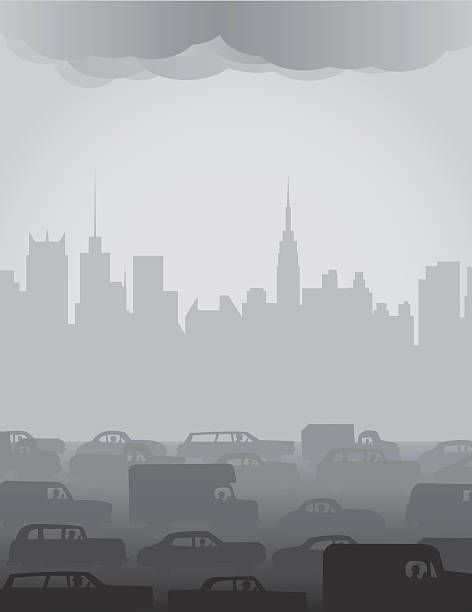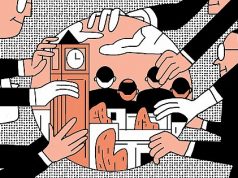The morning air in Delhi feels dense this season. An acrid smell lingers long after Diwali night fireworks fade. With the recent lifting of the ban on firecrackers, the city once again woke up to a wall of smog. Schools delayed classes, and flights were diverted as the air quality index crossed 450 in parts of the NCR in late October this year. Inside homes and offices, air purifiers continue to hum through the day.
The haze is no longer a seasonal surprise, but a continuous feature of urban life in India. Delhi’s monthly average PM2.5 (particulate matter below 2.5 microns in diameter; used to monitor pollution levels worldwide) level in January 2025 stood at 165 micrograms per cubic meter, according to the Centre for Research on Energy and Clean Air (CREA). That is over 30 times the WHO’s recommended limit. CREA estimated that health and productivity losses due to air pollution now costs the Indian economy nearly 1.3 percent of its GDP annually (roughly Rs. 4.5 lakh crore). To put that into perspective, this amount could fund the entire rural employment guarantee programme for three years or lift approximately 40 million Indians above the poverty line.
Naturally, the brunt of this crisis is not evenly shared. For Delhi’s middle class, protection is a product, bought through sealed windows, N95 masks, and high-end air filters. For the city’s informal workers, protection is out of reach. Studies by the Indian Institute of Public Health show that street vendors, daily wage labourers, and traffic police register respiratory illness rates almost twice as high as office workers in the same neighbourhoods. Many live near industrial clusters or highways, where particulate matter levels can be 40 percent higher than city averages. The right to clean air, in practice, is stratified by income.
The pattern now extends itself across the subcontinent. Of the world’s 20 most polluted cities, 13 lie in South Asia, spanning India, Pakistan, and Bangladesh. Climate and geography make this subcontinent prone to stagnant air and temperature inversions (any civil service aspirant slogging away in Delhi can spell this out for you), but the crisis is largely man-made and industries remain at the heart of it. They individualise profits and socialise costs. Steel, cement, power, and chemical manufacturing continue to externalise their pollution onto the public, which is an outcome that microeconomics has long recognised as a negative externality. When firms do not bear the full cost of production, society does. The result is a classic case of market failure, where public goods such as clean air are degraded because their value cannot be priced in private transactions.
India’s legal framework offers limited recourse. In theory, tort law, which allows citizens to seek compensation for harm caused by another’s actions, should apply to industries that damage public health through emissions. But air pollution diffuses responsibility as no single polluter can be easily identified or prosecuted. And without a robust liability mechanism, industries have little incentive to internalise environmental costs. Public goods, like breathable air, remain unguarded. Private goods, like air purifiers, flourish.
Governments have responded, but often in ways that look and feel temporary. Cloud-seeding experiments, “green” crackers, and odd-even traffic schemes dominate the headlines each winter. Yet long-term measures such as enforcing emission caps on thermal plants, market-based disincentives for polluters, or providing farmers alternatives to stubble burning progress slowly, if at all. These gestures are the equivalent of purifiers on a national scale: cosmetic and evasive. A recent review in The Lancet Planetary Health found that while India’s air-quality monitoring network has expanded, regulatory enforcement and public health preparedness remain weak. The country now records the world’s highest number of premature deaths linked to particulate pollution at nearly 2 million a year. So much for our demographic dividend!
Our countryside mirrors the same story. Each winter, stubble burning in Punjab, Haryana, and Uttar Pradesh adds a thick layer of smoke to the northern plains. The government’s attempt to subsidise machinery and pay farmers not to burn fields created a perverse incentive where farmers waited for compensation (often burning stubble so as to avail subsidies for stopping) rather than investing in residue management. Perhaps a shift in our perspective, allowing private buyers to purchase paddy stubble for use in biomass energy, packaging, or paper production, could turn stubble into a tradable good, and give rise to a sustainable agritech industry developing alongside.
Recent protests in Delhi have captured this frustration. Earlier this month, citizens gathered at India Gate demanding immediate action and calling air pollution a “public health emergency, not a weather event.” Their message was straightforward: the burden of inaction falls hardest on those who cannot shield themselves. As a paper in Environmental Research Letters (2024) warned, prolonged exposure to PM2.5 can reduce cognitive function and labour productivity, eroding the very economic advantage that a youthful population is supposed to deliver.
We have reached a stage where the air crisis has evolved beyond only an environmental or health issue. It is a question of how we define progress. If ease of living is meant to capture the quality of urban life, then breathable air should be its most basic indicator. The 2022 Ease of Living Index included environmental quality as a parameter, yet most large Indian cities had a poor score, suggesting that the country’s rapid urban expansion is outpacing its capacity to provide safe living conditions. Clean air, like clean water or electricity, is a foundational service. It underpins human capital, public trust, and social cohesion.
The haze that hangs over Delhi each winter remains a symptom of governance that treats pollution as episodic rather than systemic. The question is simple: how long can a nation chase prosperity while its citizens struggle for breath?
Post Disclaimer
The opinions expressed in this essay are those of the authors. They do not purport to reflect the opinions or views of CCS.






